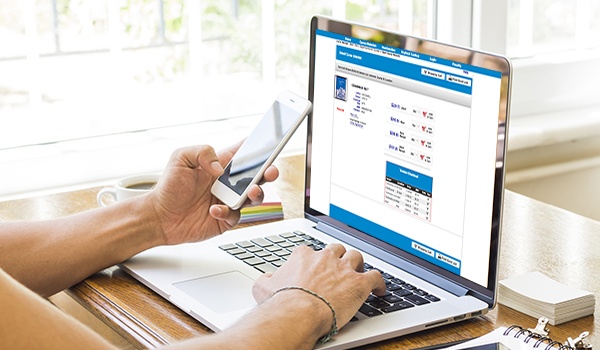College-age shoppers are price conscious. And we mean really price conscious.
They're so conscious that faking a birthday or purposefully abandoning online carts in the hopes of a discount email are common tactics for upwards of half of all millennial shoppers. And these are statistics for general online purchases — not educational materials, where the costs rising well above the rate of inflation have generated no shortage of bad press.

So what do you do to reach extremely cost-conscious and discount-savvy shoppers online? Easy: offer price comparison on your eCommerce site. This may seem counterintuitive, especially if online retailers occasionally beat you on price, but the truth is it can make a huge positive impact on your bottom line.
But if misconceptions about eCommerce are preventing you from using the tools at your disposal to their greatest potential, you're missing out on sales. That's where MBS Systems inSite's built-in price comparison functionality truly stands out.
1. It's free
Don’t be fooled by other services that offer price comparison to stores but charge thousands of dollars for it. inSite is completely free and integrated with your current system.
2. It's easy to implement
You don’t need to jump through hoops to have price comparison on your website. In fact, inSite users already have the option to include price comparison — enabling it is a matter of a call or a click.*
3. You still get paid, even if students shop elsewhere
When you offer price comparison, there’s a realistic chance that it will lead to shoppers buying elsewhere. That seems like a bad thing, and is in fact likely the reason many stores haven’t offered a price comparison tool on their websites before now. But that doesn’t mean you’re completely out of a sale. inSite gives you the ability to track referral links so you can collect commission.
"If we do lose some of our sales to Amazon, we still get a commission for any sales where the customers originated at our site through inSite.* It's worked well for us and MBS has continued to update procedures like allowing our customers to buy from us and Amazon at the same time during the checkout process."
—Penny Kimball, director of University of Alaska-Anchorage Campus Bookstore.
4. You won't scare customers off if your prices aren't the least expensive
This may be the biggest reason offering price comparison seems counterintuitive to a college retailer, but even with a group as cost-conscious as millennials, being the least expensive isn't necessarily the most important thing. Keep in mind that your store offers a level of convenience, access and additional service that no online competitor can match — and your customers know it.


